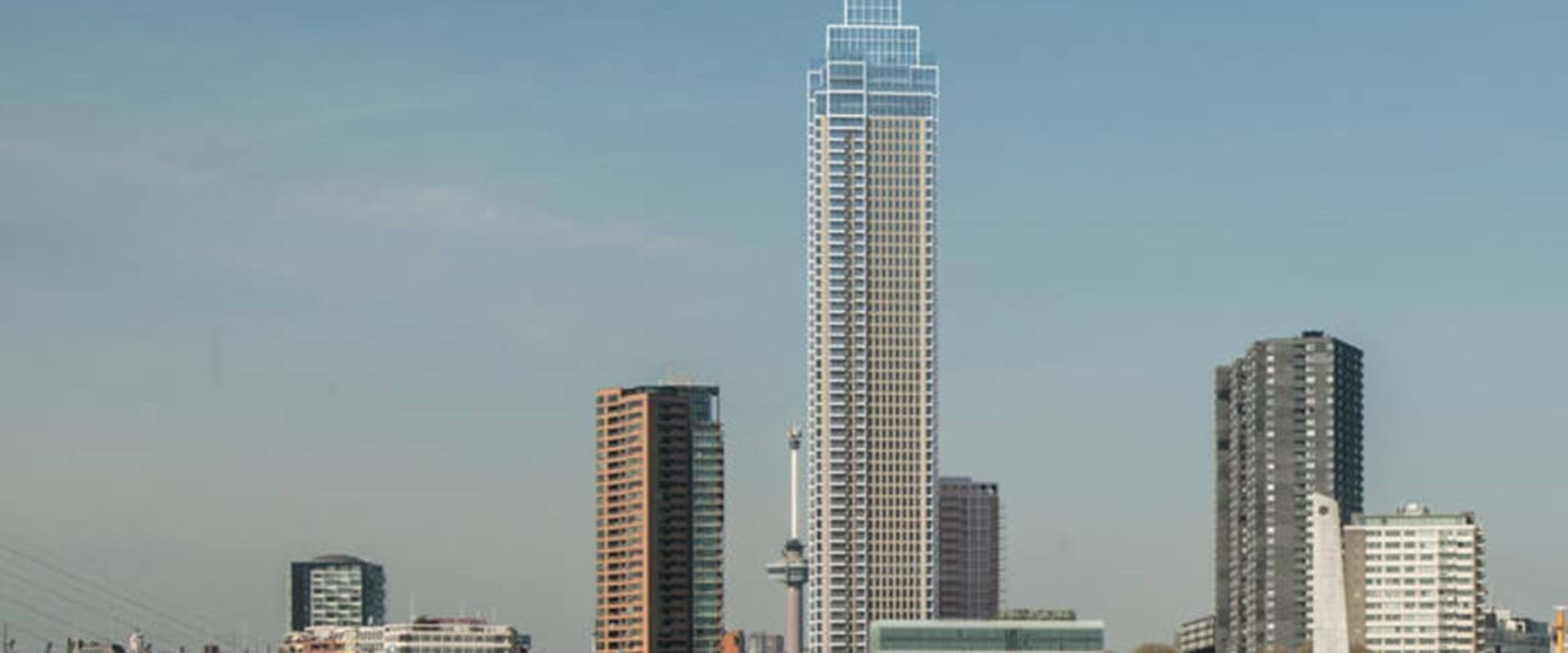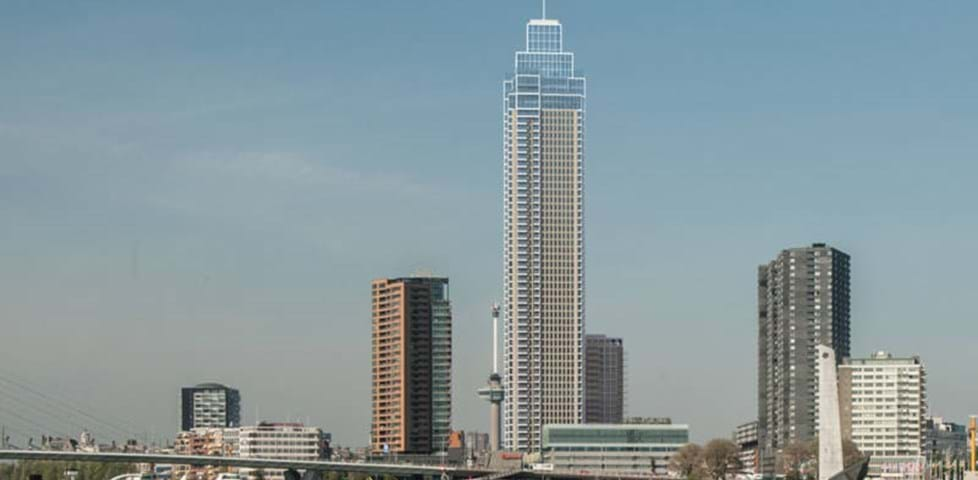World’s tallest prefabricated building
Interview with Jacco van Dijk, CEO Byldis | magazine De Stedenbouw | December 2019
The 215-meter high Zalmhaventoren will be constructed entirely of precast elements. Based on the aesthetic design by Dam & Partners Architecten, the construction design by BAM Advies & Engineering and commissioned by BAM Bouw en Techniek - Grote Projecten, Brabant-based Byldis Prefab will supply and install a rich variety of precast elements. From internal walls in 300-, 400- and 500-millimetre thickness to facade elements and lift walls of 300- and 400-millimetres and balconies and slabs of 100 millimetres. In total there are 770 complete facade elements, 1140 internal walls, 400 balcony sheets and 250 stairways landings, that will be added from the 5th to the 54th floors at a rate of one floor a week.
Our surroundings are rapidly urbanizing. Particularly in the Randstad, where the demand for living space has never been greater. In the crowded area between Amsterdam, Rotterdam, The Hague and Utrecht, hundreds of thousands of new homes must be built before 2030 in order to meet ever-increasing demands. The only solution for this is to go upwards. “But inner-city construction is no easy task”, says Jacco van Dijk, CEO of Byldis. “Developers, contractors and other stakeholders are not only confronted with busy city centres, confined spaces, noise restrictions and time-consuming traffic and safety measures, but also with limited budgets and a shortage of skilled labour. Byldis – until recently known as Hurks building components and engineering – offers a solution for all this.”
50% saving in construction time
Byldis has the ambition, as market leader in integral assembly solutions within the European high-rise sector, to continue changing the construction world. “We do this with over 50 years of experience in engineering, precast concrete and facade technology”, according to Van Dijk. “Together with more than 400 skilled colleagues we work really hard on a daily basis to develop innovative construction concepts. From the initial request and design right up to prefabrication and assembly in one of our factories, followed by installation on the construction site. With our innovative precast construction concepts, we deliver projects within half the normal time, made to measure and of extremely high quality. Furthermore, safety on and around the construction site is significantly improved. Only a few members of staff are needed to assemble the elements on site. Less transport and hoisting are required and noise disruption for the surrounding neighbourhood is kept to a minimum. These benefits come into their own with the construction of the Zalmhaventoren.”
Assembly from a hoisting platform
Originally, the Zalmhaventoren was going to be built using traditional methods, explains Van Dijk, with walls, floors, columns and beams all cast on site. “Due to the busy inner-city location, limited space on the construction site and tight schedule, however, the choice was made for precast concrete elements. In a construction team with the chief design engineer, architect and contractor, we turned the building design around using a precast system, whereby we focused not only on the engineering and constructive calculations, but also on the feasibility of the project. All precast concrete sections are divided into manageable, repeating elements that can be easily transported, hoisted and installed.” For installation, a self-climbing hoisting platform is used, with two 40-ton overhead cranes. This method was previously used with great success for the Erasmus MC, in which BAM Grote Projecten and Byldis were also involved. “Our lorries deliver all the facade sections, columns, sheets, internal walls and stairways just-in-time at the bottom of the crane, after which the overhead crane hoists them up directly from the lorry. Once at the right level, the elements are supported so that they can be transferred to an assembly crane that lifts them into place. After casting the slab floors, the platform can be raised one storey higher, after which the hoisting and assembly cycle is repeated. This makes it possible to work quickly and sheltered from the elements. In fact, the skyscraper is actually built entirely indoors.
Challenging corner elements
All outer facade elements are constructed using a supporting internal wall, a layer of insulation and a facade finish of natural stone, and are delivered on-site complete with profiles, doors and glass. “The constructive corners of the building are challenging, so we developed a special, three-dimensional corner mould”, explains Van Dijk. “The Zalmhaventoren will be – as far as we know – the highest residential tower in the world that is built using a ‘dry’ precast concrete system. This brings its own specific challenges, because the higher a building is, the greater its instability and exposure to the wind. In order to properly absorb these forces, it is essential to ensure the correct implementation and connection of the supporting elements. The corner elements play a crucial role in this. The concrete for these elements is cast vertically in one go into a mould as high as one storey of the building, with fixed-form corners as a result.”
As storage for a 215-meter-high residential tower is impossible, all concrete elements are produced according to assembly. Production of the first elements has already begun. Assembly will start in week 6-2020, and works will be completed 50 weeks later.
While Byldis Prefab is responsible for all the concrete elements of the Zalmhaventoren, Byldis Facades, specialist in aluminium facade systems is responsible for the production, supply and assembly of the aluminium fronts of the two low-rise towers and connecting plinth.

